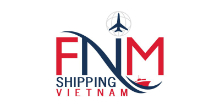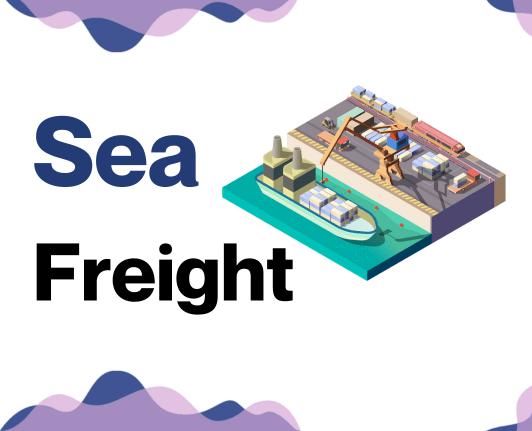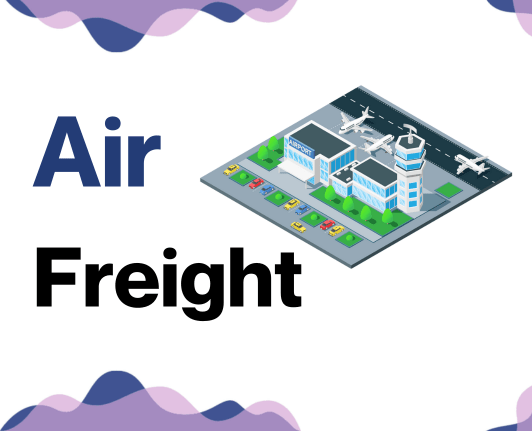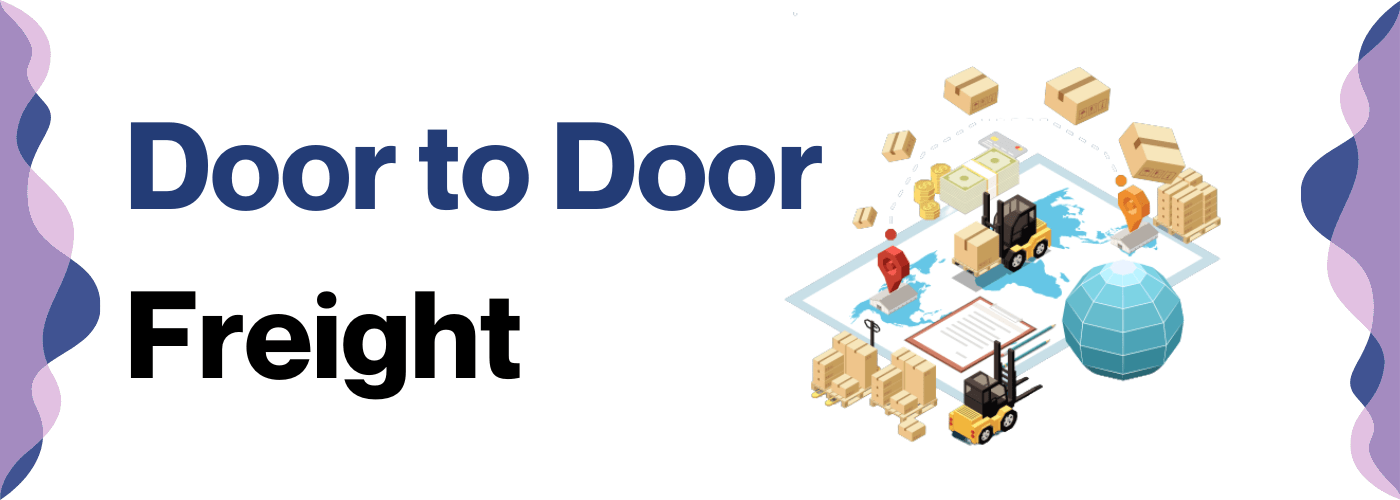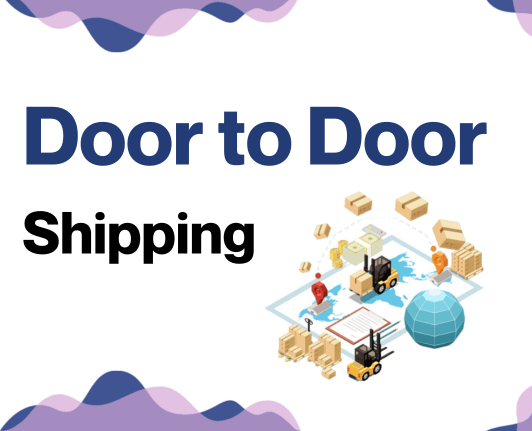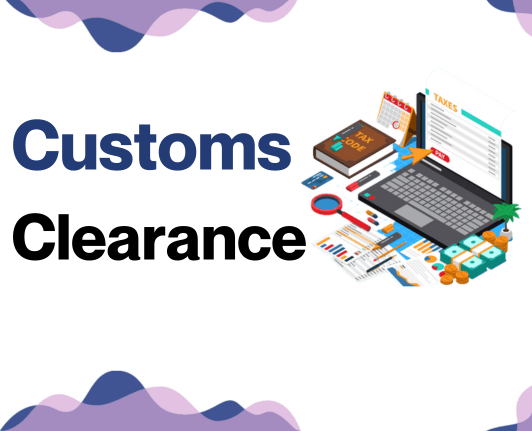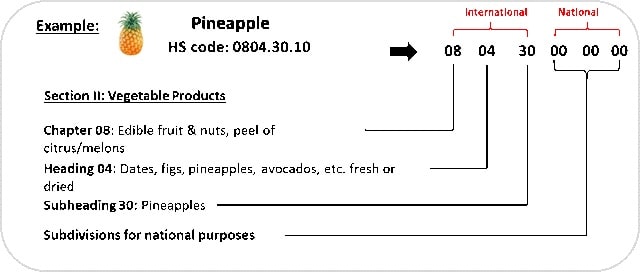Getting your cargo from Vietnam to Germany without it ending up on a surprise world tour might seem daunting, but the biggest challenges often lie in the niggly details: pinning down costs, factoring in variable transit times, and negotiating a maze of customs regulations. This comprehensive guide is your roadmap through this logistical landscape, unpacking various freight options – be it air, ocean, road, or rail – and deftly illuminating the path through customs clearance, duties, and taxes. We're here to equip you with targeted advice to make your business shipping as efficient as possible. If the process still feels overwhelming, let FNM Vietnam handle it for you! As your dedicated international freight forwarder, we transform these challenges into seamless success, simplifying every step of your shipping journey.
Summary
Which are the different modes of transportation between Vietnam and Germany?
Choosing the perfect transport method to ship goods from Vietnam to Germany, over 8,600 km away, can feel like picking the fastest horse in a marathon. You must take into account the plenty of land borders and vast seas that separate the two nations. From ocean shipping, trying its might against the Atlantic's waves, to aircraft speeding high above the Himalayas, each option presents unique implications for your timeline, budget, and type of goods. The correct choice aligns these factors, ensuring a smooth and cost-efficient delivery, because in this race, the fastest horse is not always the best.
How can FNM Vietnam help?
Looking to ship goods from Vietnam to Germany? FNM Vietnam is your reliable partner. We handle all complex tasks – from securing optimal transportation routes to hassle-free customs clearance, all tailored to your needs. Want a headache-free shipping experience? Contact us today for a free estimate in under 24 hours or speak to our consultants at no charge.
FNM Vietnam Tip: Sea freight might be the best solution for you if:
- You're moving big loads or large items. Sea freight offers roomy, cost-effective solutions.
- Your shipment isn't time-critical. Ocean routes take longer but are often more reliable.
- Your supply chain links major ports, tapping into a broad network of sea lanes.
Sea freight between Vietnam and Germany
A bridge over waters, that’s what ocean shipping between Vietnam and Germany feels like. With bustling trade activity, Vietnam's flourishing factories centered around Ho Chi Minh City and Hanoi find their European counterpart in Germany's industrial powerhouses in Hamburg and Frankfurt. The two national economies are like two mighty gears moving in sync, with the ports serving as the crucial connection.
Now, let's talk about sea freight. Oceans might move at their own pace, but when it comes to carrying heavy, bulky goods, they are like the doughty mules of the international trade world – slow, but steady and cost-effective!
But here's the rub! It's like following the rules of chess. Playing is easy but mastering needs practice. Businesses often stumble over complicated customs clearance or incorrect shipping documentation leaving their cargo stranded mid-sea. It's no sea shanty, these things happen all the time. But fear not, as you dive into this guide, we'll provide you with expert tips and navigational charts that will take you from choppy waters to smooth sailing. Let's make the seas a little friendlier together, shall we?
Main shipping ports in Vietnam
Port of Hai Phong
Location and Volume: Situated in the Quang Ninh-Hai Phong industrial economic region, the Port of Hai Phong is the principal gateway for Northern Vietnam's international commerce, boasting a shipping volume of 27.9 million tons.
Key Trading Partners and Strategic Importance: The Port of Hai Phong handles merchandise primarily from Vietnam's largest trading partners including China, South Korea, and the United States. Given its strategic importance, the port significantly contributes to Vietnam's GDP and is instrumental in its international trade performance.
Context for Businesses: If you're aiming to penetrate or strengthen your reach in the Northern Vietnam market, the Port of Hai Phong is a critical asset given its well-established shipping networks, extensive hinterland connections, and comprehensive logistics services.
Port of Da Nang
Location and Volume: Located in Central Vietnam along the country's East-West Economic Corridor, the Port of Da Nang handles a shipping volume of approximately 4.75 million tons.
Key Trading Partners and Strategic Importance: Frequently trading with nations such as Japan, Singapore, and the United States, the Port of Da Nang holds a significant role in promoting regional trade integration and boosting Vietnam's overall economic growth.
Context for Businesses: If your business aims to gain strong footholds in Central Vietnam or countries along the East-West Economic Corridor, the Port of Da Nang offers you robust logistics capabilities and direct shipment routes to key regional ports.
Port of Ho Chi Minh City
Location and Volume: Formerly known as Saigon Port, the Port of Ho Chi Minh City is strategically located in Vietnam’s most populous city and acts as the country's maritime economic hub, handling more than 60.8 million tons of goods annually.
Key Trading Partners and Strategic Importance: Favorably positioned for trade with ASEAN countries, China, Europe, and the United States, this port plays a crucial role in facilitating Vietnam's commercial activities and its resurgence as an Asian tiger economy.
Context for Businesses: Should your company be exploring opportunities within the vibrant economy of Southern Vietnam or seeking efficient logistics across multiple trading blocs, the Port of Ho Chi Minh City could offer you the advantages with its developed facilities and wide-ranging trade networks.
Port of Cai Mep
Location and Volume: The Port of Cai Mep is located in Southern Vietnam, capable of accommodating container vessels of up to 160,000 DWT with an annual shipping volume of over 3.4 million TEUs.
Key Trading Partners and Strategic Importance: The port is pivotal for trade with the European Union, United States, and other Asian economies. Further, it has acquired the strategic status of an international transshipment hub in Southeast Asia.
Context for Businesses: If your enterprise is keen on leveraging economies of scale with larger vessels or strategically positioning its supply chain for international transshipment, considering Port of Cai Mep would be beneficial due to its deepwater facilities and extensive global connectivity.
Port of Qui Nhon
Location and Volume: Positioned in the South Central Coast region of Vietnam, the Port of Qui Nhon oversees an annual shipping volume of nearly 6.03 million tons.
Key Trading Partners and Strategic Importance: Usually involved in trade with Asian and European trading partners, the port plays a critical role in serving the logistics needs of the domestic and regional economies, providing a significant boost to Vietnam's export sector.
Context for Businesses: Should your business be interested in establishing or enhancing trade with the South Central region and beyond, the Port of Qui Nhon's efficient shipping services and strong regional networks may serve your purposes effectively.
Port of Vung Tau
Location and Volume: The Port of Vung Tau is located in the Southern region close to the international shipping routes, managing a substantial shipping volume in excess of 48 million tons.
Key Trading Partners and Strategic Importance: The port accommodates international trade, particularly with maritime-heavy economies like the European Union and the United States, fortifying its important role in Vietnam's prosperous shipping industry.
Context for Businesses: If your logistics strategy focuses on capitalizing on the prime location of your supply chain facilities, Port of Vung Tau offers a unique advantage due to its close proximity to international waterways, ensuring quicker turn-around times and higher operational efficiencies.
Main shipping ports in Germany
Port of Hamburg
Location and Volume: Located on the River Elbe, the Port of Hamburg is the third-largest port in Europe and the 19th largest worldwide. Its central location in Europe makes it an essential hub in the trade of consumer goods, handling over 8.9 million TEU.
Key Trading Partners and Strategic Importance: The Port of Hamburg serves as a significant link to a wide range of countries, with China, Russia, and the United States being its major trading partners. It's strategically important as it's considered Europe's Gateway to the World.
Context for Businesses: If you're aiming to reach European markets efficiently, the port's vast network and excellent hinterland connections offer quick transit times and comprehensive distribution.
Port of Bremen-Bremerhaven
Location and Volume: Situated on the River Weser's estuary, the Port of Bremen-Bremerhaven handles around 5.5 million TEU annually. As Germany's second-largest port, it plays a crucial role in trade, particularly in automobile shipping.
Key Trading Partners and Strategic Importance: It maintains strong trade relations mainly with China, Russia, and the United States. The port's strategic importance is highlighted by its specialization in handling high-and-heavy cargo, like automobiles and industrial machinery.
Context for Businesses: For businesses dealing in automobile or machineries, this port’s capabilities in handling such cargo, can ensure safe and secure transportation of your goods.
Port of Wilhelmshaven
Location and Volume: The Port of Wilhelmshaven is the only deep-water port in Germany, able to accommodate the world's largest container ships. It handles around 0.5 million TEU a year.
Key Trading Partners and Strategic Importance: Its key trading partners include China and neighboring EU countries. It has strategic importance as a top-tier petroleum port and has recently made significant investments in its container handling facilities.
Context for Businesses: If you're in the petroleum or commodities businesses, or if you’re using the latest class of ultra-large container vessels, Wilhelmshaven’s deep waters and enhanced facilities can cater to your needs.
Port of Rostock
Location and Volume: Located on the Warnow River on Germany's northern coast, the Port of Rostock is the largest Baltic port and handles around 2.6 million TEU a year.
Key Trading Partners and Strategic Importance: The Port of Rostock has strong trade relations with Russia, Finland and Sweden. Its strategic importance stems from its location, making it an efficient gateway to Scandinavia and Eastern Europe.
Context for Businesses: If you're looking to expand into Scandinavian or Eastern European markets, Port of Rostock can offer effective routes and links to these areas.
Port of Kiel
Location and Volume: Situated in the north of Germany, the Port of Kiel is a significant passenger port with a considerable roll-on and roll-off capacity. It handles over 7.6 million tons of cargo per year.
Key Trading Partners and Strategic Importance: Kiel port has robust trade relations with Russia, Norway, and Sweden. Apart from its strategic passenger handling capabilities, Port of Kiel houses a state-of-the-art logistics center.
Context for Businesses: If you're in the shipping of passenger vehicles or roll-on-roll-off cargo, Kiel’s significant capacity, dedicated terminals and advanced logistics center might be the solution for you.
Port of Lübeck
Location and Volume: Located on the Trave River, the Port of Lübeck is the second-largest German Baltic port. It handles over 22 million tons of cargo annually.
Key Trading Partners and Strategic Importance: Lübeck is a major trading port with Russia and the Baltic Sea region. It serves a critical role in the transportation and handling of bulk commodities.
Context for Businesses: If you deal with bulk commodities or aim to access the Russian or Baltic markets, the unique capacities and connections of Lübeck port might fit your shipping strategy.
Should I choose FCL or LCL when shipping between Vietnam and Germany?
Choosing between consolidation (LCL) or a full container load (FCL) for your sea freight from Vietnam to Germany isn't just about space, it's also about strategy. Each option comes with its own costs, delivery times, and other factors that can tilt the balance of your shipping process. Understand the differences to unlock success in your international trade venture. Get ready to dive into the comparison of LCL and FCL, and discover which one suits your specific shipping needs best. Let's set sail on this information voyage.
LCL: Less than Container Load
Definition: Lesser Container Load (LCL) shipping is a cost-effective method used when the cargo volume doesn't justify a full container's cost. It means sharing container space with other shipments to maximize efficiency.
When to Use: If your cargo is less than around 15 cubic meters (CBM), LCL might be the best option. It offers flexibility for low-volume shipments and lower freight rates for small cargo, as the cost is split among several shippers.
Example: Let's say you're a Vietnamese coffee producer sending a small batch of 10 CBM to a distributor in Germany. It's not efficient to pay for a whole container (usually 20 or 40 CBM); thus, using LCL saves money and resources while ensuring your cargo gets to its destination.
Cost Implications: LCL shipments such as these may have varied costs. While the shipping fee might be lower, you might have to factor in additional handling charges at both ports — Vietnam and Germany. Nonetheless, the collective cost will generally be less than hiring a complete container. Please ask the freight forwarder for an accurate LCL shipping quote.
FCL: Full Container Load
Definition: FCL, or Full Container Load, is a type of ocean freight where a shipper rents an entire container — commonly 20'ft or 40'ft. This container is exclusively dedicated to one shipment, ensuring its safety as it remains sealed from origin to destination.
When to use: Opt for FCL shipping if your cargo is substantial in volume, typically more than 13/14/15 CBM. This high-volume transport makes the per-unit cost cheaper, providing value for money.
Example: Let's say a furniture manufacturer wants to ship a hefty load of wooden chairs from Hanoi to Hamburg. The volume exceeds 15 cubic meters, filling up almost half of a 20’ft container. Instead of sharing the remaining space, they might choose to seal off an entire FCL container for this shipment, promising safe and undisturbed transport.
Cost Implications: While FCL comes at a higher absolute price than its counterpart LCL (Less-than Container Load), companies can benefit on a per-unit basis. A bulkier shipment essentially means a lower fcl shipping quote per item, making FCL a financial win for large-scale transport. The key is in understanding the dimensions of your goods and being able to accurately estimate if FCL container shipping is cost-effective for your business.
Say goodbye to shipping headaches!
Simplify your shipping decisions with FNM Vietnam - your trusted freight forwarder. We know that choosing between consolidation and a full container can hinge on factors like costs and shipment size. Let our ocean freight experts assist in selecting the perfect shipping option for your business to make your shipping experience hassle-free. Ready to discover the easiest way to ship between Vietnam and Germany? Contact us now for a free estimation.
How long does sea freight take between Vietnam and Germany?
Sea freight between Vietnam and Germany typically takes around 30-40 days. It’s crucial to note that these transit times vary depending on factors such as the specific ports used, the weight, and nature of your goods. To get the most accurate quote, it is recommended to contact a freight forwarder like FNM Vietnam who can provide you with a tailored solution.
As for the average transit times from the main ports of both countries:
| From Vietnam (port) | To Germany (port) | Average Transit Time |
| Ho Chi Minh City | Hamburg | 36 |
| Da Nang | Bremen | 38 |
| Haiphong | Wilhelmshaven | 35 |
| Cai Lan | Rostock | 37 |
Please note that these times are averages and actual transit times can vary.
How much does it cost to ship a container between Vietnam and Germany?
Shipping a container from Vietnam to Germany? Ocean freight rates can widely range, but pinning an exact shipping cost per CBM is challenging due to factors like point of loading and destination, carrier choice, nature of goods, and market fluctuations each month. However, don't feel adrift in the sea of numbers! Our expert shipping specialists are here, ready to tailor your quote. We assess each case individually, ensuring you benefit from the best possible rates. So, relax and let us navigate the complexities for you!
Special transportation services
Out of Gauge (OOG) Container
Definition: This type of shipping refers to cargo that exceeds standard container dimensions (height, width, or length) and can't be closed in a standard container due to its oversized nature. Despite their larger than usual size, OOG containers have top and side walls that can be removed or collapsed for efficient loading and unloading.
Suitable for: Out of gauge cargo includes items that are oversized or irregularly shaped, such as industrial equipment, machinery, windmill propellers, or boat hulls.
Examples: An industrial manufacturer might use OOG containers to ship a turbine blade, or a marine company shipping a medium-sized yacht from Vietnam to Germany.
Why it might be the best choice for you: If you deal in machinery or equipment that can't conform to standard container sizes but still need protection during transport, OOG container shipping ensures your goods get to their destination safely and intact.
Break Bulk
Definition: Break bulk is the transportation of goods that are packaged but not containerised, and typically handled individually, not in unitised cargo loads.
Suitable for: Suitable for oversized, over-length, and heavy-lift cargo that doesn't fit into containers but can be individually loaded onto the vessel.
Examples: You might use break bulk shipping for items like transformers, generators, or large spools of cable.
Why it might be the best choice for you: If you're involved in projects like power plant installations or oil rig deliveries, where the cargo size varies and is typically large and heavy, break bulk is ideal due to its flexibility.
Dry Bulk
Definition: Dry bulk refers to the shipment of commodities in large, unpackaged quantities. These goods are usually 'loose' or granular, and handled by using special equipment to scoop or pour, rather than by load units.
Suitable for: Goods such as grains, coal, iron ore, or fertilizers that can be loaded in large volumes directly into the ship's hold.
Examples: A coal exporter could use dry bulk to ship thousands of tonnes of coal from Vietnam to Germany.
Why it might be the best choice for you: If your business is involved in the agriculture, mining, or energy sectors and you primarily deal with loose, granulated goods, dry bulk shipping is a cost-effective and efficient way to transport large volumes.
Roll-on/Roll-off (Ro-Ro)
Definition: Ro-Ro is a special type of sea freight where vehicles and machinery are driven on and off the ship using their wheels. This is facilitated by a ro-ro vessel which is equipped with built-in ramps.
Suitable for: Vehicles such as cars, trucks, semi-trailer trucks, trailers, and railroad cars, as well as heavy machinery that can be rolled on and off the freight vessel.
Examples: An automotive manufacturer shipping cars en masse, or a construction firm distributing heavy machinery like excavators and cranes.
Why it might be the best choice for you: If your business deals predominantly with vehicles or large, self-propelled construction machinery, Ro-Ro shipping provides a simple and efficient way to get your products to your customers with minimal handling, thus reducing the risk of damage.
Reefer Containers
Definition: Reefer containers are temperature-controlled containers used for the transport of perishable goods. They ensure constant conditions and can cool or freeze depending on the commodity's requirements.
Suitable for: Goods requiring a specific temperature during shipment such as fruits, vegetables, dairy products, meats, pharmaceuticals, or certain chemicals.
Examples: A pharma company shipping vaccines, or a food exporter sending exotic fruits from Vietnam to Germany.
Why it might be the best choice for you: If your business handles goods that need specific temperature control during transport, reefer containers are essential in maintaining the quality and safety of your products.
At FNM Vietnam, we're dedicated to demystifying the shipping process and easing your logistic challenges. Contact us today and receive a free shipping quote in less than 24 hours. We'll help you identify the best sea freight option for your cargo and make sure it arrives safely at its destination.
FNM Vietnam Tip: Air freight might be the best solution for you if:
- You're on a tight schedule. Air freight delivers speed unmatched by other modes.
- Your cargo is under 2 CBM, a good fit for air's smaller capacity.
- Your destination is off the usual routes, making air's global network a key asset.
Air freight between Vietnam and Germany
When it comes to speed and reliability, air freight from Vietnam to Germany packs a power punch. Picture this: your business, dealing in small, high-value items like electronic components or precious gems, that need to be in Berlin pronto. Air freight is your superhero, ensuring that your package’s journey is as smooth as a non-stop flight in the perfect weather.
However, the route to cost-effective air freight isn't always as clear as the skies. Get this: something as simple as estimating shipping costs can stumble even the industry veterans. It's common to see shippers calculating the item's raw weight, overlooking the volumetric weight (which airlines actually charge by). Also, missing on industry best practices could make your costs soar like an unplanned detour in your journey. But don't fret - we're about to deep dive into these common potholes so that your air-freight experience is more 'first-class', less turbulent. Get on board!
Air Cargo vs Express Air Freight: How should I ship?
Looking to fly your goods from Vietnam to Germany? Understand the nuances of Air Cargo and Express Air Freight - the former tags along in commercial airliners, while the latter zips through in stratified planes. We're here to simplify this puzzle so you can make informed decisions that cater to your shipment's urgency, cost constraints, and quantity. Stay tuned!
Should I choose Air Cargo between Vietnam and Germany?
Opting for air cargo between Vietnam and Germany might suit your budget. Prominent airlines like Lufthansa Cargo and Vietnam Airlines have a reputable track record in freight services. They are cost-effective and reliable, often ideal for loads more attractive from 100/150 kg (220/330 lbs). Keep in mind, however, that transit times can be longer due to fixed schedules. Balancing these elements will ensure your freight needs are met efficiently.
Should I choose Express Air Freight between Vietnam and Germany?
Considering shipments to Germany from Vietnam under 1 CBM or 100/150 kg (220/330 lbs)? Express Air Freight, a service using dedicated cargo planes sans passengers, could be a perfect solution. Noteworthy courier giants like FedEx, UPS, and DHL excel in this arena, ensuring swift, reliable deliveries. Select this option when speed is paramount, and weight/volume isn't excessive.
Main international airports in Vietnam
Tan Son Nhat International Airport
Cargo Volume: Handling over 1.4 million tonnes of cargo per year, this airport holds the largest cargo-processing capacity in Vietnam.
Key Trading Partners: China, USA, Japan, and South Korea contribute significantly to this airport’s freight volume.
Strategic Importance: With its location in Vietnam's largest city, Ho Chi Minh, this airport offers easy connectivity to the South-East Asian markets.
Notable Features: First-class facilities encompassing everything from loading equipment to storage and an experienced workforce make this airport a popular choice for international cargo shipment.
For Your Business: Businesses aiming vast reach in South-East Asia would find this airport's superb connectivity and premium facilities beneficial. This airport is particularly effective for high-speed, high-frequency shipping operations.
Noi Bai International Airport
Cargo Volume: This airport handles roughly 700,000 tonnes of cargo annually, serving as the second largest cargo hub in Vietnam.
Key Trading Partners: China, South Korea, Japan, and Taiwan are the primary trading partners utilizing this airport.
Strategic Importance: Being the largest airport in Northern Vietnam, it caters largely to North-East Asian markets and serves as the entry point to Vietnam's capital city, Hanoi.
Notable Features: The airport's location near key industrial areas makes it well-positioned to serve import/export trade. It also boasts Vietnam’s largest cargo terminal.
For Your Business: If your shipping strategy targets the vibrant markets of the North-East Asian regions and focuses on the Vietnamese capital’s developed and rapidly evolving industrial zones, Noi Bai International Airport is a prudent choice.
Da Nang International Airport
Cargo Volume: As the third largest airport of Vietnam, it handles approximately 200,000 tonnes of cargo per year.
Key Trading Partners: Key trading countries include China, South Korea, Japan, and Singapore.
Strategic Importance: Its strategic location midway country make it a popular transfer point for cargo moving to and from the southern and northern parts of Vietnam.
Notable Features: The airport can handle various types of cargo and benefits from proximity to major shipping ports for convenient sea-air transport synergy.
For Your Business: Businesses looking for a multi-modal shipping strategy might appreciate this airport's geographical advantage and the flexibility it adds to their cargo transportation options.
Cần Thơ International Airport
Cargo Volume: Although smaller in scale, handling up to 50,000 tonnes annually, it plays an important role in the cargo network of Vietnam.
Key Trading Partners: The primary trading nations include China, Japan, South Korea, and India.
Strategic Importance: Its location in the heart of the Mekong Delta positions it perfectly to serve the south-western region of Vietnam.
Notable Features: With its modern cargo-handling equipment, this airport is efficient in handling both perishable and non-perishable goods.
For Your Business: For businesses with a particular focus on south-western Vietnam and the Mekong Delta region with specific perishable goods and products, Cần Thơ International Airport can be an ideal choice offering specialized services towards these needs.
Phú Quốc International Airport
Cargo Volume: Processing over 10,000 tonnes of cargo each year, it is a growing presence in international cargo handling.
Key Trading Partners: Main cargo trading partners are China, South Korea, Singapore, and Thailand.
Strategic Importance: Situated on the Phú Quốc island, it is a vital link in the logistics chain for the southern coast of Vietnam.
Notable Features: The airport capitalizes on its tourist location to handle a unique cargo mix, including seafood and other perishables.
For Your Business: Businesses exporting high-value and time-sensitive perishable goods, particularly seafood, might find Phú Quốc International Airport an apt choice thanks to its prime location and specialized handling capabilities.
Main international airports in Germany
Frankfurt Airport
Cargo Volume: Around 2.1 million tons of freight per year
Key Trading Partners: USA, China, Japan, UAE, and South Korea
Strategic Importance: As the busiest cargo airport in Europe, it offers businesses broad connectivity across multiple continents.
Notable Features: Offers warehousing, logistics services, fresh produce handling, and animal logistics. With its state-of-art cargo infrastructure, it can handle all types of goods.
For Your Business: With a central European location, Frankfurt Airport can be the optimal hub for exporting or importing goods within the continent. It's particularly useful if your business is in industries such as agriculture, automotive, or pharmaceuticals.
Munich Airport
Cargo Volume: Over 380,000 tons of cargo per year
Key Trading Partners: USA, China, UAE, and Japan
Strategic Importance: Being the second busiest airport in Germany, it acts as an important hub for businesses needing connectivity to Eastern Europe and Far East.
Notable Features: Offers direct cargo flights, modern cargo handling facilities, and express cargo services.
For Your Business: If you have high-value or time-critical goods, Munich's express cargo services and expedited customs can ensure swift delivery.
Hamburg Airport
Cargo Volume: Approximately 70,500 tons of cargo per year
Key Trading Partners: China, Russia, USA, and UAE
Strategic Importance: As a key gateway to Northern Germany and Scandinavia, it offers strong links to these markets.
Notable Features: Features separate cargo terminals, 24/7 operations, and expedited customs clearance services.
For Your Business: If your business trades primarily with Northern Europe, Hamburg Airport is a strategically positioned hub to consider.
Cologne Bonn Airport
Cargo Volume: Over 860,000 tons of cargo per year
Key Trading Partners: USA, China, UAE, Great Britain and Hong Kong
Strategic Importance: Known as Germany's 'Night Flight Airport', it operates around the clock and acts a hub for express deliveries across Europe.
Notable Features: It has dedicated terminals for courier, express, and postal services (CEP) and specialized infrastructure for perishable and valuable goods.
For Your Business: It's the perfect choice for businesses using time-critical logistics strategies, thanks to its night operations and express services.
Düsseldorf Airport
Cargo Volume: Over 100,000 tons of cargo per year
Key Trading Partners: USA, China, UAE, Japan, and United Kingdom
Strategic Importance: With direct links to over 200 destinations, it’s a key logistics center for the highly industrialized Rhine-Ruhr region.
Notable Features: Its modern CargoCity provides efficient logistics services, including a 'free zone' for duty-free storage.
For Your Business: If you're involved in high-tech or high-value goods, Düsseldorf's efficient handling and direct connections to important markets can give you a competitive edge.
How long does air freight take between Vietnam and Germany?
On average, air freight shipping between Vietnam and Germany takes approximately 4-6 days. Please note that this timeframe can vary significantly depending on various factors such as the specific airports involved, the weight of the shipment, and the nature of the goods being transported. For the most accurate shipping times tailored to your specific needs, it is highly recommended to consult with an experienced freight forwarder like FNM Vietnam.
How much does it cost to ship a parcel between Vietnam and Germany with air freight?
In air freight shipping, parcel prices can range widely, averaging roughly between 2.50 to 5.00 Euros per kg when shipping from Vietnam to Germany. Precise cost calculation is complex due to factors such as the distance from airports, parcel weight and dimensions, and the nature of the goods. Rest assured, our seasoned team meticulously evaluates each case to offer you the best possible rates. Eager to get started? Contact us and receive a tailored, free quote in less than 24 hours.
What is the difference between volumetric and gross weight?
Gross weight refers to the total weight of a cargo, including goods, packaging, and any packing material. In contrast, volumetric weight, also known as dimensional weight, estimates the space an item occupies rather than focusing solely on the weight.
Air cargo calculates volumetric weight by multiplying the length, width, height (all in cm) of the package, and dividing it by a standard factor, often 6000. If you're shipping a box that's 40 cm high, 50 cm wide, and 60 cm long, the volumetric weight would be (405060) / 6000 = 20 kg (approx. 44 lbs).
On the other hand, the gross weight would simply be the package's actual weight. So, if your package weighs 15 kg (approx. 33 lbs), the gross weight is 15 kg.
For express air freight services, the calculation for volumetric weight is similar but uses a different factor, usually 5000. Using the same box dimensions, the volumetric weight with express service would be (405060) / 5000 = 24 kg (approx. 53 lbs).
Why do these matter? Airlines and freight services charge based on the greater of the two weights - gross or volumetric - as it ensures they are adequately compensated either for the weight or the space the shipment occupies on their aircraft. Understanding these concepts helps businesses anticipate shipping costs better.
FNM Vietnam Tip: Door to Door might be the best solution for you if:
- You seek hassle-free shipping. Door-to-door manages the entire process for you.
- You like one go-to contact. A dedicated agent oversees your door-to-door shipment.
- You aim to limit cargo handling. Fewer transitions mean less risk of damage or loss.
Door to door between Vietnam and Germany
When it comes to international shipping, Door to Door is the whole package - from your Vietnamese front door right onward to a German doorstep. For businesses craving simplicity and zero fuss, this method is the prime choice, offering minimal handling and maximal efficiency. So ready to unpack the benefits of Door to Door shipping between Vietnam and Germany? Let's dive in!
Overview – Door to Door
Shipping from Vietnam to Germany can feel like braving a storm. With door-to-door shipping, you're sailing on calmer waters. As FNM Vietnam's most popular service, it makes logistics hassle-free by handling every step – from picking up your goods to delivering them right at the recipient's door. Not only does it ease the complexities of customs clearance, it also saves you time. Yet, don't forget the shipping cost can be higher. If you seek the perfect blend of simplicity and efficiency, then this service is tailor-made for you. Enjoy the convenience, minus the stress.
Why should I use a Door to Door service between Vietnam and Germany?
Ever tried juggling flaming swords while walking a tightrope? It's a lot like managing the logistics of international shipping, but without the circus music! If you're shipping goods between Vietnam and Germany, here are the top 5 reasons why a Door to Door service might be the lifesaver you didn't know you needed.
1. Stress Eraser: Pick-up and delivery of your goods straight from the source to the destination. No more wrangling with local transportation and worrying about misroutes. That's a load off your mind!
2. Punctuality Pro: Demanding deadlines can turn shipping into a high-pressure scenario. Door to Door services specialize in fast-track options, ensuring your cargo arrives on time, every time.
3. Complex Cargo Champion: Specialized services are the superheroes you call for complex cargo. Wrapped, packed, and moved with expert care, ensuring the integrity of your goods is maintained.
4. Convenience Master: Say goodbye to coordinating with multiple trucking companies. Door to Door handles it all, right to the end. It’s an all-you-can-eat buffet, but for logistics!
5. Absolute Accountability: One service, multiple tasks, and a single destination for your queries. Blame games are off the table, and you're dealing with a single partner, improving speed and reliability.
Why struggle with logistics when you can make it as easy as ordering a cappuccino? Door to Door service is the answer to your Vietnam-Germany shipping needs. No more juggling or tightropes necessary!
FNM Vietnam – Door to Door specialist between Vietnam and Germany
Experience hassle-free door-to-door shipping between Vietnam and Germany with FNM Vietnam. From packing to customs clearance, across all shipping methods - we've got it all under control. Our expert team ensures your shipment's proper handling, making it a trouble-free process for you. With a dedicated Account Executive assigned for your requirements, we are committed to providing personalized, efficient service. Interact with our specialists for free, or request a complimentary estimate and get it in less than 24 hours. Trust us for your shipping needs, you won't have to lift a finger!
Customs clearance in Germany for goods imported from Vietnam
Customs clearance is a critical part of international shipping, marking the official transfer of goods from one country to another. In our case, it's about importing goods from Vietnam to Germany. It's not always smooth sailing - complexities arise in the form of unexpected fees, as well as prerequisites like understanding duties, taxes, quotas, and licenses. Without proper insight, your shipment could hit a roadblock at customs. Don't panic, though - we'll dissect each of these components in the subsequent sections. Especially for Germany, where procedures are strict, it might be overwhelming, but FNM Vietnam is here to help! For an estimate on your project, get in touch with our team, armed with the origin of your goods, their value, and the HS Code. With these details in hand, we can guide you across the finish line. Let's navigate the shipping world together.
How to calculate duties & taxes when importing from Vietnam to Germany?
Navigating through the maze of duties and taxes when importing goods from Vietnam to Germany might seem challenging at first. To calculate the customs duties, you need a variety of key inputs including the country of origin, the HS Code of your product, the Customs Value, and the applicable Tariff Rate. Remember, there may also be additional taxes and fees that are specific to the product you're bringing into the country. Your first step in this journey is to accurately determine the country where the goods were originally manufactured or produced. This step is crucial as it sets the foundation for the whole customs duties estimation process, gearing you up for a smooth and effective importing experience.
Step 1 - Identify the Country of Origin
Nailing down the country of origin, in this case, Vietnam, kick starts your import journey. It helps pinpoint potential duties and taxes you need to cough up when your products hit German soil. What's more, Vietnam and Germany share robust trading ties under the EU-Vietnam Free Trade Agreement. This could be your golden ticket to smoother, cheaper shipping. Delve deep and get the low down on how this agreement can work to your advantage, possibly cutting away some import taxes.
Watch out, though! Not every product gets a free pass. Certain items like tobacco, alcohol, or certain chemicals have import restrictions. Before you go full steam ahead, make your job easier and check for any roadblocks on your import route. This can save you from innovation-blocking paperwork, unexpected fees, or even trade law issues.
At the end of the day, knowing your origin country simplifies jumping into that HS code hunt, home to the breakdown of your due taxes and duties. Armed with this info, you're shaping up to navigate the complex world of international shipping like a pro.
Step 2 - Find the HS Code of your product
The Harmonized System Code, commonly referred to as the HS Code, is a set of universal product codes used globally in international trade. This numeric code, developed by the World Customs Organization (WCO), classifies traded products, making it easier for customs officials to apply taxes and regulations.
Your product's HS Code is important for international shipping, as it's vital not only for determining the exact duties and taxes you'll be obligated to pay but also for ensuring seamless customs clearance. Typically, the simplest way to obtain the HS Code for your product is to ask your supplier, who's well-acquainted with the products they're exporting and the related regulations.
Nevertheless, if you can't connect with your supplier or obscurity persists, don't fret! We're here to guide you through the process to easily identify the HS Code for your product. First, head over to this resourceful Harmonized Tariff Schedule tool. Then, type the name of your product into the search bar, and review the 'Heading/Subheading' column. Here, you'll find the HS Code you've been seeking.
A word of caution, however. Strive for accuracy when identifying your product's HS Code. Any inaccuracies could cause complications, like delays in clearing customs or even additional fines. Treat it with the same level of importance as ensuring your commodity prices and product descriptions are accurate.
To help you navigate this process with even more ease, here's an infographic showing you how to read an HS code. Armed with this knowledge, you'll be able to recognize the correct HS codes and avoid any potential mishaps in your shipping process.
Step 3 - Calculate the Customs Value
Understanding the customs value is integral to your shipping process from Vietnam to Germany. It differs from product value and is actually known as the CIF value - an acronym for Cost, Insurance, and Freight. Rather than simply being the price of the goods, the customs value encompasses the price of your goods, the cost of shipping them internationally, and insurance.
Say, for instance, you're shipping a product valued at $5000. Let's suppose the international shipping charges amount to $1000 and the insurance cost is $200. Your CIF value, or customs value, will thus be $7200. It's essential to calculate this accurately to avoid any unforeseen issues during the customs clearance process in Germany. By understanding and correctly determining the customs value, you'll make your shipping process smoother and more predictable.
Step 4 - Figure out the applicable Import Tariff
An import tariff, also known as a customs duty, is a tax imposed on products imported into a country. In Germany, as a member of the EU, tariffs are applied to imports based on the TARIC system.
A practical tool to identify the applicable import tariff for your goods coming from Vietnam is the TARIC System - European Customs. Here's the step-by-step process:
1. Enter the HS (Harmonized System) code for your product. Let's say you're importing wooden furniture, which has an HS code of 940360.
2. State the country of origin, in this case, Vietnam.
You can click on the HS code which will then reveal the current duties and taxes applicable for your product.
Let's illustrate with an example. Assuming the tool provides a tariff rate of 2.5% for the wooden furniture and your CIF (Cost, Insurance, and Freight) value is $10,000. The import duty would be calculated as follows: 2.5% of $10,000 which equals $250. This would be the customs duty you'd have to pay for the imported goods.
Step 5 - Consider other Import Duties and Taxes
In addition to the standard tariff, other import duties or taxes often apply when transporting goods from Vietnam to Germany. These fees can vary depending on the product type and its country of origin.
One such example is excise duty. This tax applies to specific products such as alcohol or fuels and is usually a fixed amount per quantity. Suppose you're shipping 10,000 litres of wine (just an example, so the value might not be accurate), and the excise duty is $0.9 per litre. Your charge will then be (10,000 litres x $0.9/litre) $9,000.
Another potential cost is anti-dumping taxes. These may apply if your item's price is significantly below its typical value in the German market, which can hurt domestic industries. These duties can vary greatly and are specific to certain products and countries.
Finally, pay keen attention to VAT (Value Added Tax). In Germany, it's currently at 19%. So, if your shipment's value plus freight cost equals $50,000, you'll be looking at an additional (19% x $50,000) $9,500 just for VAT. These amounts can add up, so it's critical to factor them in.
Every business's situation is unique, and the mentioned figures were just examples to illustrate the concept. It's always recommended to consult with a customs specialist to better understand your specific situation and possible charges. By doing so, you can navigate this aspect of your shipping journey more confidently and predictably.
Step 6 - Calculate the Customs Duties
In this step, we will discuss how to calculate customs duties when importing goods from Vietnam to Germany.
Customs duties are calculated based on the customs value of your product, multiplied by the duty rate. So if your product has a customs value of $45,000 with a duty rate of 5%, your total customs duty would be $2,250 ($45,000 5%). This is an example where only customs duties apply.
In situations where Value Added Tax (VAT) applies, the calculation becomes a bit more complex. Suppose your product value is $35,000 with a duty rate of 7% and a VAT rate of 21%. First, you'll pay a duty of $2,450 ($35,000 7%). Then, the VAT is calculated on the sum of the customs value and the duty, giving us a tax of $7,874.50 (($35,000 + $2,450) 21%).
Lastly, if there are anti-dumping taxes and Excise Duty, the scenario changes again. Assume your goods total $50,000, the customs duty rate is 8%, VAT is 21%, anti-dumping duty is 10%, and Excise Duty is 4%. Your total payable amount will be: customs duty at $4,000, the anti-dumping duty at $5,000, the excise duty at $2,000, and VAT calculated on the sum of all values ($71,400) at nearly $15,000.
Coming to grips with all these calculations can be complex. Don't let customs calculations hold your business back – FNM Vietnam offers seamless customs clearance services worldwide, ensuring you're never overpaying. Contact us for a free quote in under 24 hours – you'll be glad you did!
Does FNM Vietnam charge customs fees?
Navigating customs fees can be tricky! FNM Vietnam, as a customs broker across Vietnam and Germany, isn't the one collecting your customs duties - these go straight to the government. What FNM Vietnam does charge for is the customs clearance service, helping you smoothly process your shipment. Here's a pro tip: make sure to distinguish between these two types of costs. And yes, we're all about transparency. You'll receive all necessary documents from the customs office, so you can plainly see what you're paying for and that it aligns with the official tariff!
Contact Details for Customs Authorities
Vietnam Customs
Official name: General Department of Vietnam Customs
Official website: https://www.customs.gov.vn/
Germany Customs
Official name: Generalzolldirektion (General Customs Directorate)
Official website: https://www.zoll.de/
Required documents for customs clearance
Cracking your head over customs paperwork? We get it. It's not a walk in the park. Let's unravel the complexities behind the Bill of Lading, Packing List, Certificate of Origin, and Documents of Conformity (CE standard). With us, mastering these crucial tools for a successful customs clearance is guaranteed.
Bill of Lading
When you're shipping goods from Vietnam to Germany, the Bill of Lading (BoL) is like your golden ticket. Serving as an official mark of ownership transfer, the BoL might feel as heavyweight as the cargo it represents. A telex (electronic) release adds convenience to the mix, enabling faster, paperless transactions. Similar to the BoL, for air cargo, you've got the AWB, which stands as your proof of contract for carriage. Imagine being able to circumvent some of those headache-inducing administrative bottlenecks with the efficiency of digital processes. That's the power a telex release hands you. Your key takeaway? Getting familiar with the BoL and considering a telex release can be a lifesaver for timely, efficient shipping between Vietnam and Germany.
Packing List
Sourcing electronics from Ho Chi Minh City to be sold in Munich? You'd better have your Packing List in order. When shipping between Vietnam and Germany, this document is your golden ticket, detailing every single item inside your shipment. Craft one meticulously whether you're sending sea or air freight. It's more than just a list - it’s a snapshot that allows customs officers at both ends to verify the contents swiftly. Imagine delaying a thousand smartphones because you forgot to include model numbers. Diligently keeping accuracy in check helps avoid costly shipping errors and customs bottlenecks. It's your responsibility as a shipper to streamline your cargo journey from Saigon to Stuttgart. With a well-prepared Packing List, you're providing transparency and fostering trust in an often-complicated shipping process.
Commercial Invoice
The Commercial Invoice is no ordinary piece of paper when shipping between Vietnam and Germany. Regarded as the transaction's DNA, it should detail the buyer and seller, product's description, Harmonized System (HS) code, country of manufacture, and the deal's total value. Why is it crucial? It's used to calculate duties. The catch? A single error can lead to customs clearance delays. Align all details with your other shipping documents for seamless customs experience. But, here's a tip - try to be extra accurate with your HS codes. These six digits could mean the difference between your product being slapped with high tariffs or sliding through easily. Clear, accurate, and decisive - the way to getting your Commercial Invoice approved.
Certificate of Origin
Got a shipment cruising from Vietnam to Germany? Let's talk about an essential document involved - the Certificate of Origin. This document is your golden ticket for smoother customs clearance. In essence, it verifies where your goods were manufactured. Specifying the country of manufacture becomes crucial when trading between Vietnam and Germany as it can unlock preferential customs duty rates, which equals saving euros! Let's imagine you're moving electronics made in Vietnam. Having a Certificate of Origin substantiates their Vietnamese origin, possibly qualifying for lower duties under the EU-Vietnam Free Trade Agreement. So, aim to get that certificate nailed down right at the start - your wallet will thank you!
Certificate of Conformity (CE standard)
As you venture into exporting goods from Vietnam to Germany, obtaining a Certificate of Conformity (CoC) to the CE standard will be essential. The CE mark confirms that your product aligns with the health, safety, and environmental protection standards of the European Economic Area (EEA), which includes Germany. Unlike basic quality assurance, this mark indicates compliance with EU regulations and can make customs clearance smoother. For equivalence, in the US, specific regulations may require certifications like UL or FCC. To ensure a smooth sailing, do thorough research on your product's specific industry standards or engage a compliance expert. Remember, lacking a CE mark may halt your shipment at German customs, impeding your business flow. Furthermore, keep in mind that after Brexit, the UK follows its own UKCA marking, unlinking it from EU's CE system.
Your EORI number (Economic Operator Registration Identification)
Shipping between Vietnam and Germany just got easier with an EORI number. It's like your business's passport for EU customs procedures. Unique to your operations, this identifier streamlines tracking of your imports and exports within the EU. And yes, you guessed it, Germany is within the EU. So how do you get your hands on one? Simple, register through the German Customs website. Remember, without an EORI number, your shipment is like a jigsaw puzzle missing a piece. Get ahead, register for your EORI number, and enjoy a smoother ride through customs. It's your ticket to a hassle-free shipping journey from Vietnam to Germany and beyond.
Get Started with FNM Vietnam
Navigating customs clearance between Vietnam and Germany can be complex. Delegate the nitty-gritty to us at FNM Vietnam. Our team of experts are skilled in every step of customs protocol. Say goodbye to paperwork headaches and hello to a seamless, transporting journey. Need a free quote? We promise unwavering efficiency - less than 24 hours. Get in touch!
Prohibited and Restricted items when importing into Germany
Understanding what you can and cannot bring into Germany is crucial to avoid snags at customs. Complexity arises from items that seem harmless but could land your shipment in a hot spot. Let's help you steer clear of such unexpected hindrances.
Restricted Products
- Pharmaceuticals: For exporting or importing pharmaceuticals to Germany, you'll need to get approved by the Federal Institute for Drugs and Medical Devices.
- Live Animals and Animal Products: To deal with livestock or animal-derived goods, make sure you check in with the Federal Ministry of Food and Agriculture.
- Weapons and Ammunition: If firearms are your business, you'll need to register with Germany’s Federal Office of Economics and Export Control.
- Nuclear Materials: For shipping nuclear materials, you’ll need to adhere to the regulations set up by the Federal Office for the Safety of Nuclear Waste Management.
- Chemicals: The trade in certain chemicals is controlled in Germany. For this, you'll need to visit the German Federal Environment Agency.
Remember, these links should provide you with all the necessary information to apply for the appropriate permits or licenses. If you're uncertain, it might be a good idea to get in touch with a freight forwarder who's experienced in the German market.
Prohibited products
• Narcotics (such as cannabis, cocaine, heroin, and other illicit drugs)
• Weapons (both Express and Concealed) without permit
• Certain Plants and Plant Products, due to risk of disease
• Explosive materials or Fireworks without permit
• Endangered animals, plants, and their derivative products protected under the Convention on International Trade in Endangered Species (CITES)
• Pornographic material depicting minors
• Products containing the Confederate flag
• Radioactive substances without permit
• Rough diamonds not compliant with the Kimberley Process Certification Scheme
• Counterfeit and pirated goods
• Unauthorized medicine, prescription drugs without proper documentation
Are there any trade agreements between Vietnam and Germany
Yes, there's a major development for businesses shipping between Vietnam and Germany. In 2020, an EU-Vietnam Free Trade Agreement (EVFTA) came into effect, making it easier and more cost-effective to trade goods. As a result, you can minimize custom duties for certain items and streamline the overall shipping process. Any future developments, such as improved railways and ports, will further enhance your shipping efficiency. Keeping an eye on these changes and leveraging the benefits can make a massive difference to your bottom line.
Vietnam - Germany trade and economic relationship
Germany and Vietnam boast a long-standing, close-knit economic relationship, which dates back to their diplomatic ties established in 1975. Among ASEAN countries, Vietnam is one of Germany's top trading partners, exchanging goods and services valued at over $12bn annually in 2024. Fueled by mutual respect and growing economic interdependence, trade milestones like the EU-Vietnam Free Trade Agreement (EVFTA) in 2020, have ushered in a new era of bilateral partnerships, particularly in key sectors such as machinery, automobiles, footwear, and textiles. German FDI into Vietnam has snowballed in recent years, exceeding $2.5bn in 2024 , with 350+ German businesses igniting local industries with their vibrant investments. The flourishing economic alliance, matched with Vietnam’s rising appeal as a manufacturing hub, paints a promising picture for prospective shippers navigating this lucrative trade route.
Your Next Step with FNM Vietnam
Unfolding international trade between Vietnam and Germany can be a daunting trek, laden with customs clearances and logistics mayhem. For a smoother glide through the bureaucratic hoops, let us, at FNM Vietnam, steer your voyage. We're experts in simplifying your sea, air, or rail freight forwarding needs with precision and efficiency. Don't let regulations and paperwork slow down your global growth. Contact us now and let's ship smarter, together.
Additional logistics services
Uncover how FNM Vietnam effortlessly enhances your supply chain beyond just shipping and customs. Dive into our range of additional logistics services tailor-made to simplify your trade process from end-to-end.
Warehousing and storage
Craving a reliable warehousing solution for your Vietnam-Germany shipping needs? It's crucial to get it right. From finding a climate-controlled environment for temperature-sensitive goods like electronics to ensuring secure storage, the stakes are high. Breathe easy, we've got your back. Discover how you can overcome these challenges and more over at our dedicated page on Warehousing
Packaging and repackaging
Shipping between Vietnam and Germany demands robust packaging. It's more than cardboard and tape; it's about protecting goods from diverse climates and lengthy transits. A qualified agent can ensure your product, from fragile ceramics to bulky machinery, stands up to the shipping challenge. Refrain from DIY; a dented box or repackaging error can turn into delays or damages. Trust your shipment to experts. More info on our dedicated page: Freight packaging.
Cargo insurance
Unlike fire insurance, which covers damage from flames, cargo insurance is more about dodging bullets in shipping mishaps. Picture this; your goods banging against rough sea waves or getting held up in transit mishaps. Guess who's got you covered? Precisely, Cargo Insurance steps in! It cushions you against these potential risks, ensuring your goods arrive in top shape. Curious about wrapping your items in this security blanket? More info on our dedicated page: Cargo Insurance
Supplier Management (Sourcing)
Fretting over finding reliable suppliers for your business? FNM Vietnam has got your back. This team doesn't just find suppliers in Asia and East Europe, but also manages your entire procurement process. Think of them as your guide, breaking down language barriers and smoothing the path to successful sourcing in these regions. Real-life example: a German healthtech startup who swiftly began manufacturing in Vietnam, thanks to FNM's support. Craving more details? Dive into the world of Sourcing services.
Personal effects shipping
Relocating between Vietnam and Germany can raise challenges, especially with fragile or hefty belongings. Take heart, our service ensures these items are treated with utmost care and agility. Imagine your prized ceramic collection or bulky antique dresser reaching safe, just like your heart's desire. For a stress-free move across continents, delve deeper into the process on our dedicated page: Shipping Personal Belongings.
Quality Control
East-to-west shipping demands high quality. By ensuring rigorous inspections throughout the manufacturing process, surprises are kept at bay. Picture this : Our client, an electronics manufacturer shipping to Germany, averted potential loss by detecting faulty capacitors in premium headphones. Avoiding these unexpected hitches saves time and cost, assuring that your products meet quality standards expected. More info on our dedicated page : Quality Inspection
Product compliance services
Understanding the intricacies of international regulations can be tough. That's where our Product Compliance Services step in. We'll test your goods in our lab, secure certification, and ensure your shipment adheres to the destination's regulations. Imagine a scenario: you're shipping electronics, but unaware of specific compliance requirements, leading to shipment delays. With our service, you'll bypass such hassles, knowing your products meet all necessary standards. It's about bridging borders, hassle-free!
FAQ | Freight Forwarder in Vietnam and Germany
What is the necessary paperwork during shipping between Vietnam and Germany?
When shipping from Vietnam to Germany, we at FNM Vietnam ensure that all necessary documents are in place. The key documents include a bill of lading for sea freight and a waybill for air freight. Rest assured, we manage these for you directly. What we do need from you, however, is the packing list and the commercial invoice. Depending on the specific nature of your goods, there may be a requirement for additional documentation, such as Material Safety Data Sheet (MSDS) or certain certifications. We're here to guide you through every step and make the shipping process smooth and efficient.
Do I need a customs broker while importing in Germany?
Indeed, while importing goods into Germany, we strongly advise employing a customs broker. The reason behind this recommendation lies in the intricate procedures you'd need to follow along with several mandatory documentations to be submitted. The process can be complex for businesses to navigate independently. As FNM Vietnam, in most cases, we handle customs representation for your shipments. In this capacity, we take care of the provisions, paperwork, and due processes with the authorities, streamlining the importation process for you, making it less challenging and time-consuming.
Can air freight be cheaper than sea freight between Vietnam and Germany?
While it's challenging to provide a one-size-fits-all answer, the cost-effectiveness of air vs. sea freight greatly depends on factors like the route, weight, and volume of your cargo. Generally speaking, air freight can be a competitive option for cargo less than 1.5 Cubic Meters or weighing under 300 kg (660 lbs). Here at FNM Vietnam, we strive to provide tailored solutions best suited to your shipping needs. Our dedicated account executives are always at your disposal to help you make an informed decision and ensure you get the most out of your investment.
Do I need to pay insurance while importing my goods to Germany?
While insuring your goods for import isn't mandatory, we at FNM Vietnam highly recommend considering it, given the potential risks during shipping. Transporting goods, especially internationally, comes with a variety of potential incidents that can lead to damage, loss, or even theft of your cargo. Having insurance coverage can provide you with peace of mind and financial protection against these unintended occurrences. It's a precautionary measure worth considering for a secure shipping journey to Germany.
What is the cheapest way to ship to Germany from Vietnam?
Considering the distance and economic viability, ocean freight is the cheapest option to ship goods from Vietnam to Germany. It offers cost-effective pricing for large volumes, although it may take longer. However, transit times and shipping costs can vary with the specific requirements of your cargo. We, at FNM Vietnam, facilitate effortless shipping and customs clearance, ensuring your goods reach their destination smoothly and cost-effectively.
EXW, FOB, or CIF?
Choosing between EXW, FOB, or CIF terms fundamentally depends on your relationship with your supplier. They may not be logistics experts, hence it's typically beneficial to have us, at FNM Vietnam, manage the international freight and destination processes. Many suppliers sell under EXW, meaning delivery is at their factory's door, or FOB, covering all local charges until the origin terminal. However, to make it easier, we provide door-to-door service. This ensures your cargo is dealt with professionally from start to finish, eliminating any stress or uncertainty from the process.
Goods have arrived at my port in Germany, how do I get them delivered to the final destination?
If your goods have landed at the terminal in Germany under CIF/CFR incoterms, you'll need a customs broker or freight forwarder for clearance and final delivery. Alternatively, you can have our FNM Vietnam team handle all these procedures under DAP incoterms. We recommend discussing these details further with your account executive.
Does your quotation include all cost?
Absolutely, at FNM Vietnam, we pride ourselves on transparency. Our quotations encompass all costs, excluding only the destination duties and taxes. You can always reach out to your dedicated account executive for an estimate of these. Rest assured, we commit ourselves to avoid any hidden fees to prevent unwelcome surprises.
